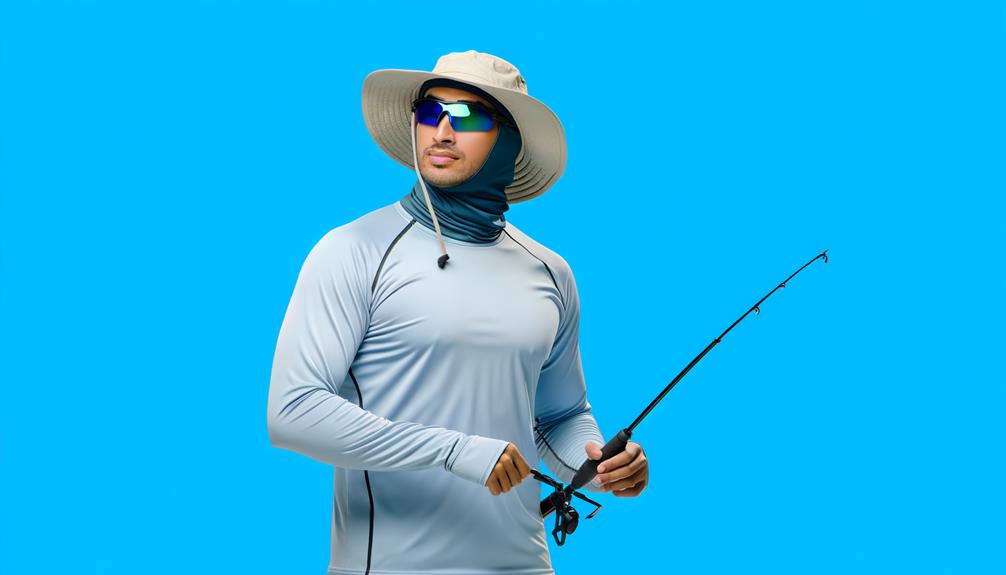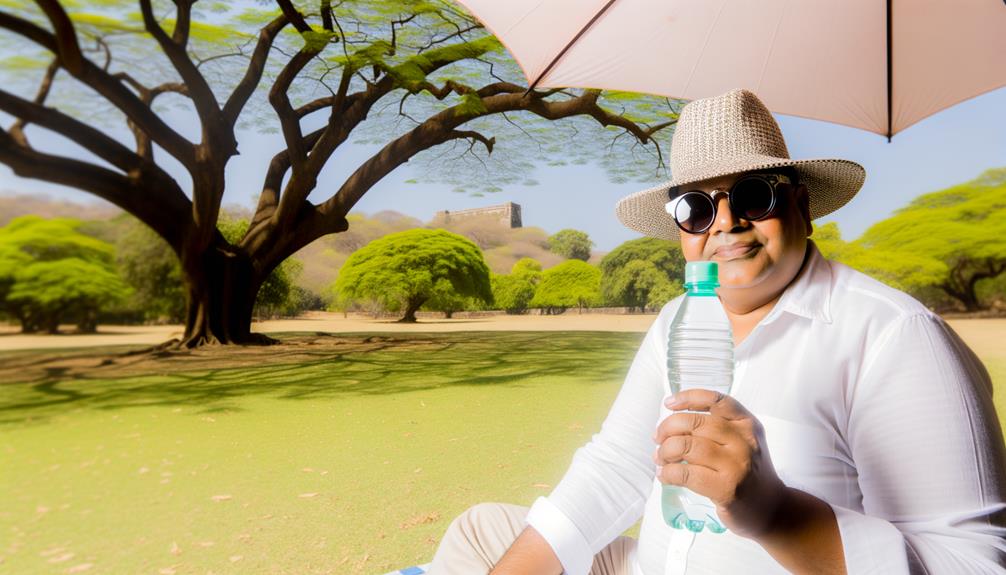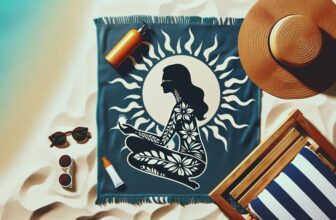
As outdoor enthusiasts, it's essential to acknowledge the potential risks associated with excessive sun exposure during outdoor activities. The harmful effects of UV radiation on the skin are well-documented, and proactive measures to prevent tanning and minimize skin damage are crucial.
By understanding and implementing practical strategies for sun protection, individuals can continue to enjoy their outdoor pursuits while prioritizing their skin health. In the following discussion, we will explore effective approaches to shield the skin from excessive tanning, including the selection of appropriate clothing, the application of sunscreen, and the importance of eye protection.
These insights aim to empower individuals to make informed choices that lead to a healthier outdoor experience.
Key Takeaways
- Schedule outdoor activities before 10 AM or after 4 PM to avoid the strongest UV rays.
- Wear protective clothing with high UPF and choose longer shorts and collared shirts for added protection.
- Apply sunscreen with a high SPF every two hours or more frequently if sweating or swimming.
- Protect the eyes by wearing sunglasses that provide 100% UV ray protection.
Sun Protection Clothing

When engaging in outdoor activities, it is essential to prioritize sun protection by wearing sun protection clothing that shields the skin from harmful UV rays. Sun protection clothing plays a crucial role in preventing tanning and minimizing the risk of sun damage.
To avoid tan lines and sunburn, consider selecting clothing with a high Ultraviolet Protection Factor (UPF) and opt for densely woven, lightweight fabrics in bright or dark colors. These fabrics offer greater protection against harmful UV rays, reducing the likelihood of sun tanning.
Additionally, wearing long sleeves, pants, longer shorts, and collared shirts provides added coverage to prevent tanning on the face, neck, and legs. Choosing clothing with a UPF rating of 30 and above is recommended, especially during the summer when sun tan is more prevalent.
Effective Sunscreen Application
To effectively protect the skin from harmful UV rays, proper and thorough application of sunscreen is essential during outdoor activities. When selecting a sunscreen, opt for a high SPF (Sun Protection Factor) of at least 30 to prevent tanning and sunburn.
It's crucial to apply sunscreen generously and evenly to all exposed skin, ensuring that commonly missed areas such as the ears, back of the neck, and tops of the feet are adequately covered. Allow the sunscreen to absorb into the skin for at least 15 minutes before sun exposure, and remember to reapply it every two hours or more frequently if sweating or swimming.
Additionally, for preventing tanning on the face, choose a sunscreen specifically designed for facial use, and be mindful of applying it to the delicate skin around the eyes and on the lips.
Skin Protection in Cold Weather

During cold weather outdoor activities, proper skin protection is essential to prevent damage from the harsh elements and UV rays.
- Apply sunscreen with a high SPF, as snow and ice can reflect UV rays.
- Use lip balm with SPF to protect the lips from sunburn.
- Wear protective clothing such as hats, scarves, and gloves to cover exposed skin.
- Use moisturizers to prevent dryness and maintain skin health.
- Avoid prolonged exposure to cold and windy conditions, which can damage the skin.
Skin protection in cold weather is crucial to prevent tanning and maintain skin health. Even in low temperatures, UV rays can still cause skin damage, especially when reflected off snow and ice. It's important to apply sunscreen, protect the lips with SPF lip balm, wear appropriate clothing, keep the skin moisturized, and limit exposure to harsh weather conditions.
Eye Protection Measures
Implementing effective eye protection measures is essential for safeguarding the eyes from harmful UV rays during outdoor activities. When it comes to eye protection against tanning, it's crucial to choose sunglasses that not only shield the eyes but also prevent tan lines on the face.
Look for sunglasses that offer 100% UV ray protection and indicate protection against both UVA and UVB rays. Opt for wraparound sunglasses to shield the entire eye area, reducing the risk of tanning and sun damage. It's important to note that the darkness of the lens does not equate to better protection; instead, focus on the UV protection level.
Additionally, consider the impact of temperature on tanning, as UV rays can be intense even in cooler weather, particularly when reflected off snow or ice. By selecting the right sunglasses and understanding the influence of environmental factors, individuals can effectively safeguard their eyes from tanning and potential sun-related conditions.
Hydration and Shade Seekin

Seeking shade and staying hydrated are essential practices for maintaining skin health during outdoor activities. When it comes to preventing tanning, these two measures play a crucial role in protecting the skin from excessive sun exposure. Here are some important tips to consider:
- Frequent Hydration: Drink plenty of water before, during, and after outdoor activities to prevent dehydration and maintain skin elasticity. Dehydrated skin is more prone to damage from UV rays, leading to a higher risk of tanning.
- Use of Shade Structures: Seek out shaded areas, such as under trees, canopies, or umbrellas, to reduce direct exposure to the sun. This can significantly lower the risk of tanning and sunburn.
- Wearing Sun-Protective Clothing: Choose clothing with UPF (Ultraviolet Protection Factor) to cover as much skin as possible and reduce the impact of UV rays.
- Proper Timing: Plan outdoor activities earlier in the morning or later in the afternoon to minimize exposure to the sun's peak intensity.
- Reapplication of Sunscreen: Even when seeking shade, ensure that sunscreen is reapplied as directed to maintain its effectiveness in preventing tanning and skin damage.
These practices are effective in mitigating the risk of tanning and maintaining healthy skin during outdoor activities.
Frequently Asked Questions
How Can I Prevent Tanning While Participating in Outdoor Activities?
To prevent tanning during outdoor activities, it's essential to apply high SPF sunscreen, wear protective clothing, seek shade, and reapply sunscreen every 2 hours. Use sunglasses with 100% UV protection and stay hydrated to maintain healthy skin.
What Are Some Tips for Protecting My Skin From the Sun's Harmful Rays During Outdoor Activities?
Protecting your skin during outdoor activities is essential. Wear protective clothing and apply sunscreen with a high SPF. Seek shade, stay hydrated, and use sunglasses with UV protection. These measures minimize the risk of harmful UV ray exposure.
Are There Specific Clothing Items I Should Wear to Prevent Tanning and Sunburn During Outdoor Activities?
When engaging in outdoor activities, it's important to wear protective clothing such as bright or dark-colored fabrics with high Ultraviolet Protection Factor (UPF), long sleeves, and pants to prevent tanning and sunburn. Choose clothing with a UPF rating of 30 and above for added protection.
How Can I Effectively Apply Sunscreen to Prevent Tanning and Sunburn?
To effectively apply sunscreen, choose a broad-spectrum, high SPF product. Apply generously to all exposed skin, including commonly missed areas. Reapply every two hours, or more frequently if sweating or swimming. Allow it to absorb for 15 minutes before sun exposure.
What Are Some Measures I Can Take to Protect My Eyes From UV Rays During Outdoor Activities?
To protect your eyes from UV rays during outdoor activities, wear sunglasses providing 100% UV ray protection. Look for sunglasses with UVA and UVB protection, choose wraparound styles, and ensure they block 99-100% of UV rays to prevent eye conditions.


